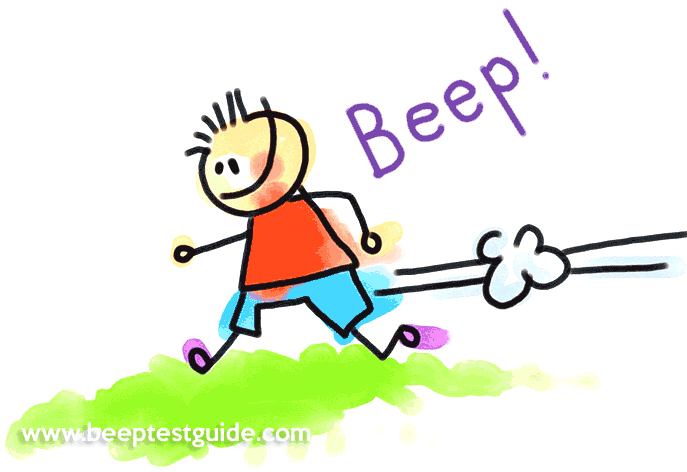History of the Beep Test
A common assessment method for aerobic fitness is a running test over a set time or distance. These run tests are still popular, though a known limitation is the requirement of the participants to pace themselves well. A variation of a run test was developed by Canadian sport scientist Luc Léger in the 1970s, the University of Montreal Track Test (Léger & Boucher, 1980). This test was similar to a running test for distance, but was progressive so that at regular intervals (every 2 minutes in this case) the running pace was increased. This test was the precursor to what we now call the beep test.
A new test evolved from the Track Test, the 20 meter shuttle run test, which maintained the progressive nature of the test, but modified it so it can be performed indoors and with much less space required. The test was first presented in its current format of 20 meter shuttles by Léger and his colleague Jean Lambert, though at first it was conducted with two minute stages (Léger & Lambert, 1982).
Throughout the 1980s, Léger continued to develop and popularize the shuttle run test. More research followed, investigating the validity and reliability of the test for a range of sports and people of a large range of ages and fitness levels. (see selected references).
The test became known by many as the "beep test", the origin of this name is obvious, with the participants required to run back and forth between markers in time to audio 'beeps'. For some unknown reason in the UK it is popularly called the 'bleep test'. The test is known by many other names too, including the multistage shuttle run test, PACER and it is sometimes (incorrectly) called the yo-yo test.
This test has been adopted, adapted and renamed by researchers and test batteries throughout the world and is the most widespread and popular field test of cardiorespiratory fitness in the world, the preferred choice for aerobic testing for large sporting, school or workplace groups.
Recently Tomkinson et al. (2017) published a comprehenisve analysis of many studies, creating international norms for the 20 meter shuttle run test based on data from 1,142,026 children and youth representing 50 countries.
Some Significant Milestones
- 1980 - details of the University of Montreal Track Test, the precursor to the beep test, was published (Léger & Boucher, 1980).
- 1982 - First paper published with the beep test using 20m shuttles though with 2 minute stages (Léger & Lambert, 1982).
- 1984 - publication of the shuttle run test with 1-minute stages (Léger et al., 1984).
- 2017 - norms calculated by Tomkinson et al. (2017) based on data from 1,142,026 children and youth representing 50 countries.
References
- Léger, L. and R. Boucher. An indirect continuous running multistage field test: the University of Montreal Track Test. Can. J. Appl. Spt. Sci. 5 (2): 77-84, 1980.
- Léger, L.A. and Lambert, J., 1982, 'A maximal multistage 20m shuttle run test to predict VO2max', European Journal of Applied Physiology, Vol 49, p1-5.
- Léger, L.A., Lambert, J., Goulet, A., Rowan, C., & Dinelle, Y. (1984). Capacité aérobie des Québécois de 6 à 17 ans — test navette de 20 mètres avec paliers de 1 minute. Canadian Journal of Applied Sport Sciences, 9(2), 64-69.
- Tomkinson GR, Lang JJ, Tremblay MS, Dale M, LeBlanc AG, Belanger K, Ortega FB, Léger L. International normative 20 m shuttle run values from 1 142 026 children and youth representing 50 countries. Br J Sports Med. 2017 Nov;51(21):1545-1554.
More Resources
- more information about Luc Léger, the original creator of the beep tests.
- List of information pages
Reference this Page

